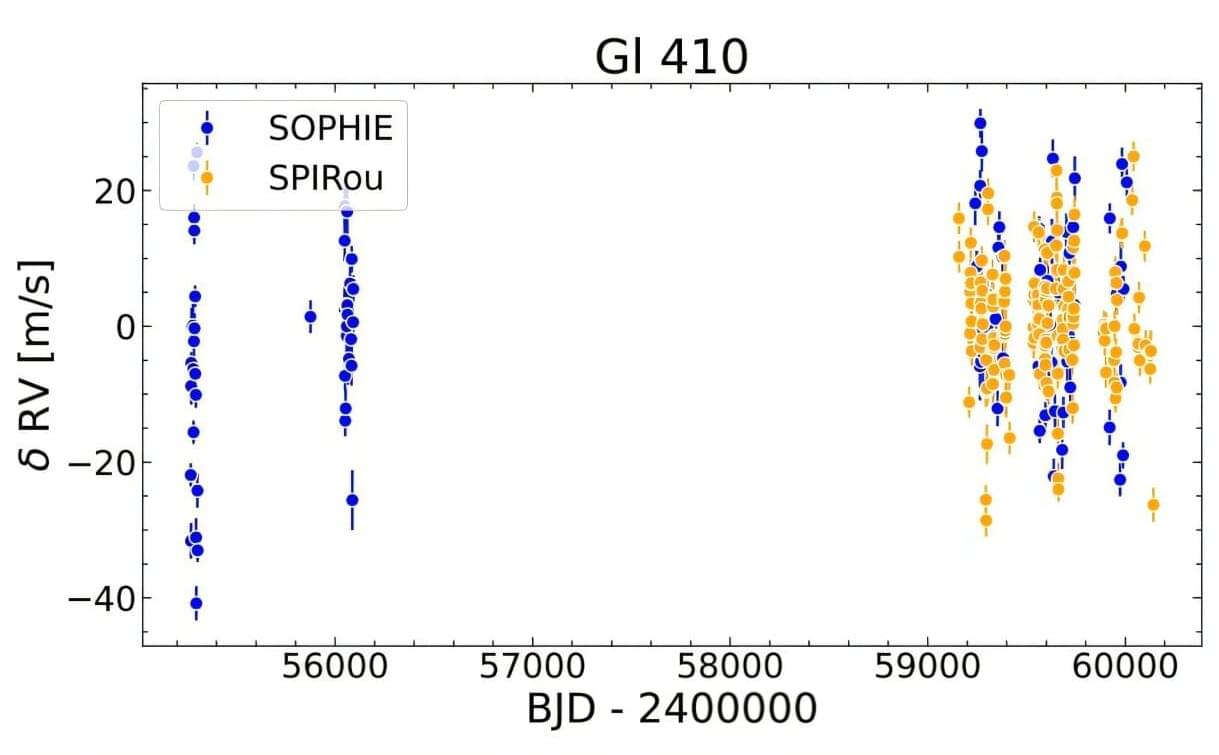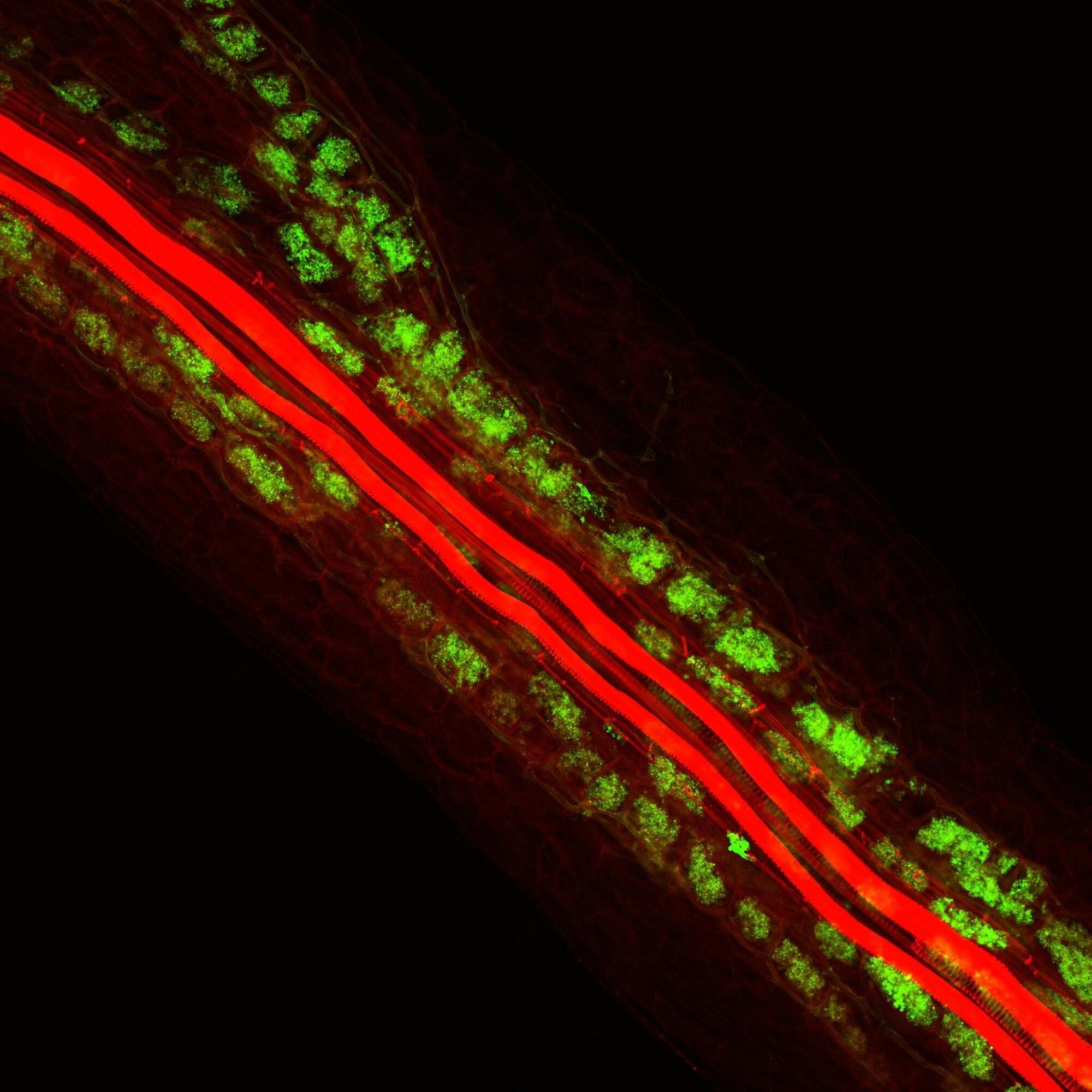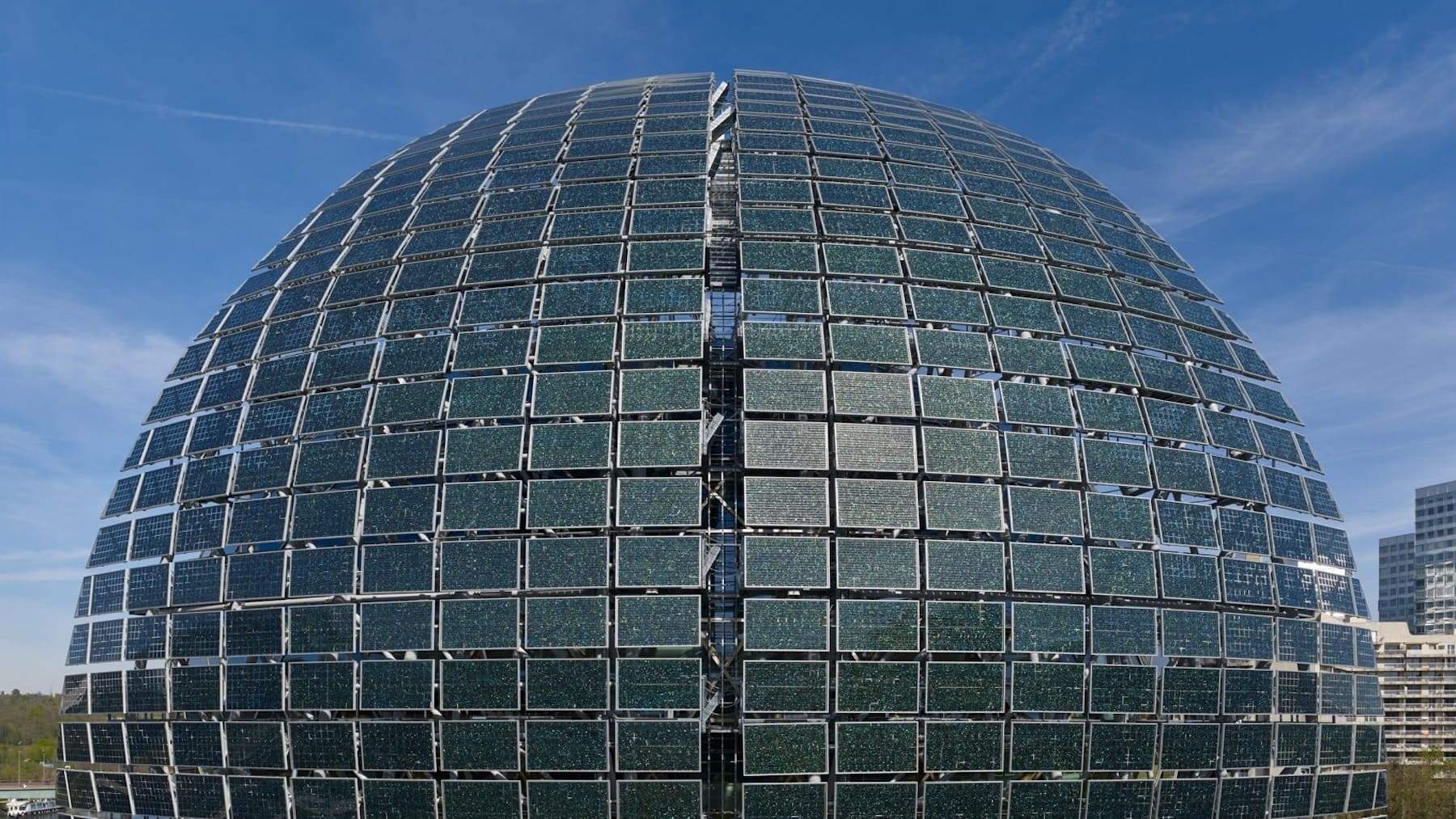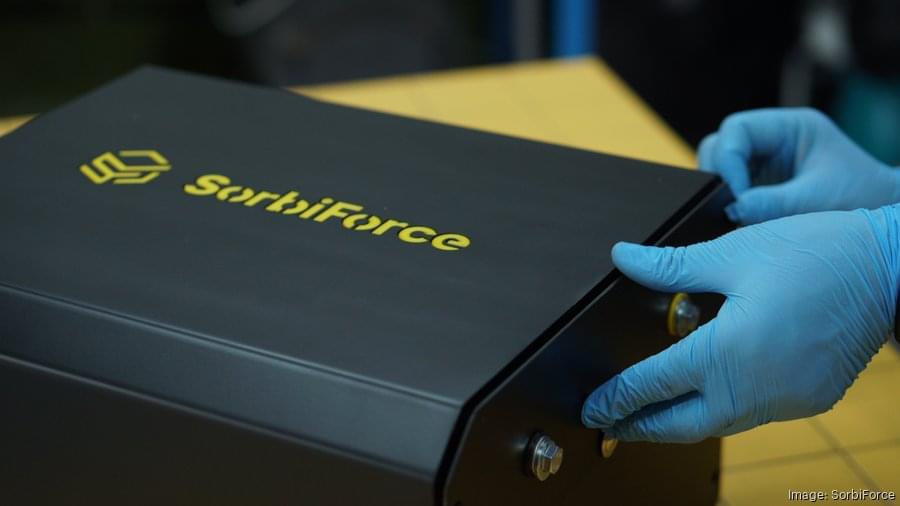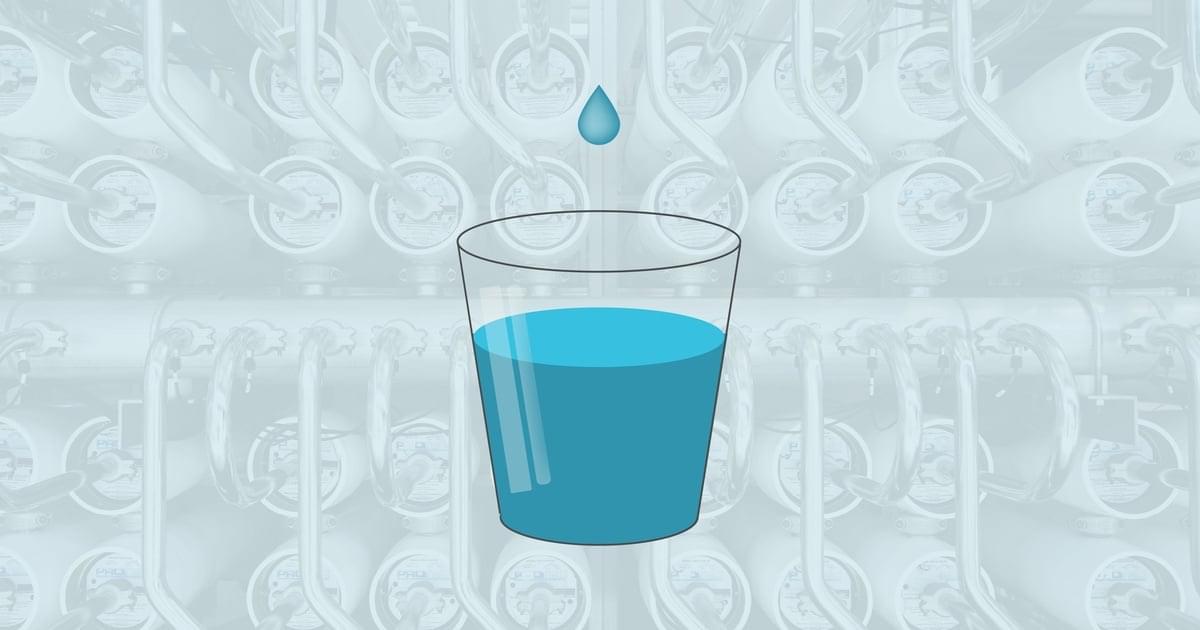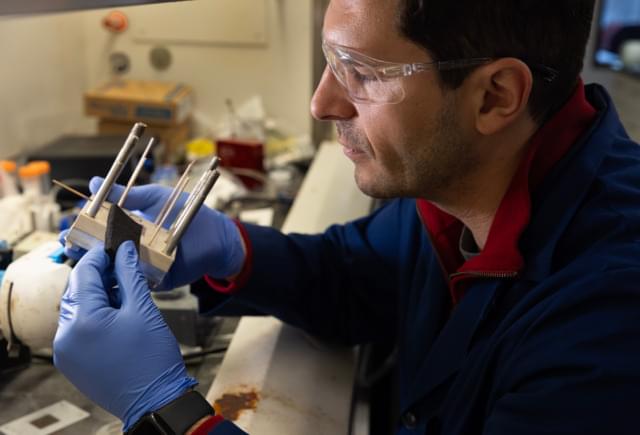Using the radial velocity method, an international team of astronomers has discovered a new extrasolar planet orbiting a nearby star known as GI 410. The newfound alien world was classified as a sub-Neptune exoplanet with a mass of at least 8.4 Earth masses. The discovery was reported April 4 on the pre-print server arXiv.
The radial velocity (RV) method of detecting an exoplanet is based on the detection of variations in the velocity of the central star, due to the changing direction of the gravitational pull from an unseen exoplanet as it orbits the star. Thanks to this technique, more than 600 exoplanets have been detected so far.
Now, a group of astronomers led by Andres Carmona of the Grenoble Alpes University in France reports another exoplanet detection using the RV technique. The discovery was made with the SPIRou near-infrared spectropolarimeter at the Canada–France–Hawaii Telescope (CFHT). The observations were complemented by data from the optical velocimeter SOPHIE at the Haute-Provence Observatory.
